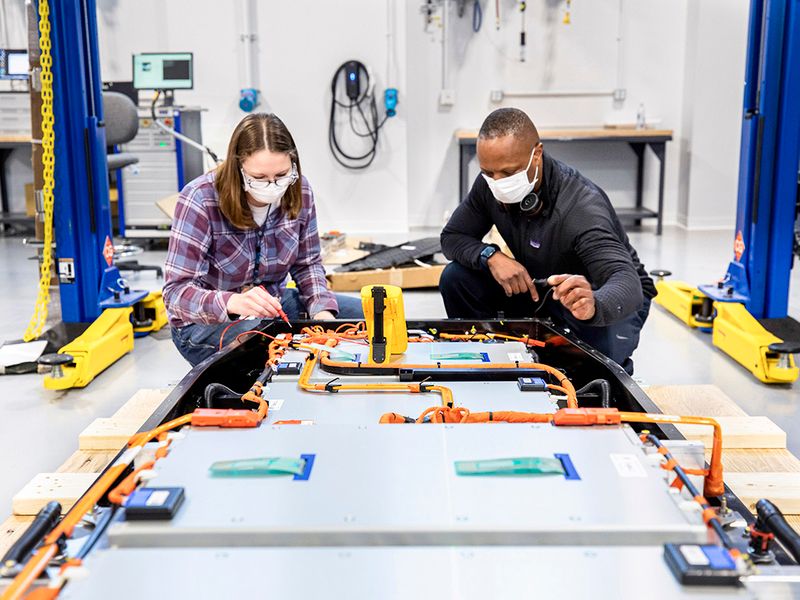
DETROIT — Ford Motor Co. said Tuesday it’s investing $185 million in a research lab for electric vehicle battery development as it moves closer to manufacturing its own cells.
Called Ford Ion Park, the 200,000-square-foot facility in southeast Michigan will have 150 employees and be capable of designing and manufacturing battery electrodes, cells and arrays at the pilot level. It’s planned to open by the end of 2022.
“We’re already scaling production of all-electric vehicles around the world as more customers experience and crave the fun-to-drive benefits of electric vehicles with zero emissions,” Hau Thai-Tang, Ford’s chief product platform and operations officer, said in a statement. “Investing in more battery R&D ultimately will help us speed the process to deliver more, even better, lower cost EVs for customers over time.”
The plans for the battery lab follow CEO Jim Farley’s comments last week in an Automotive News World Congress interview that Ford will need “lots of battery plants” as it ramps up production of EVs.
“In the first inning, you could buy batteries and you could cherry-pick the technology, energy density and cost from multiple sources,” Farley said in the interview. “We’re in the second inning now. The volumes are going to grow. We’ve committed $22 billion to converting the factories and engineering the new products. The next thing is going to be allocating the cost of batteries. Our $22 billion does not include any resources for batteries. So you can imagine and you can expect from Ford lots of announcements.”
Ford said the $185 million investment in Ion Park is incremental to the $22 billion commitment.
The company has changed its thinking from less than a year ago when former CEO Jim Hackett told investors there was “no advantage” to vertically integrating battery cell production.
In the months since, however, Ford’s EV plans have come into sharper focus with the launch of the Mustang Mach-E and the impending arrival of the E-Transit and electric F-150. The company has said it will sell only EVs in Europe by 2030 and made significant EV commitments in Canada.
“We’re at a point where there’s sufficient scale to entertain having greater levels of vertical integration at some point,” Thai-Tang said.
Farley last week said his thinking on the subject has changed in part due to the ongoing semiconductor shortage, noting that he has been benchmarking nonautomotive companies that use chips and found that many have a safety stock or source them multiple ways.
“This has been a really key lesson and it comes on the eve of this change where the whole industry is moving to batteries as a key commodity,” Farley said. “I think chips are a great metaphor for the growing technology in our vehicles, including batteries.”
Thai-Tang on Tuesday reiterated that notion, saying the chip shortage has “highlighted the importance of controlling the supply chain.”
The automaker said Anand Sankaran will be director of Ford Ion Park. He is currently the company’s director of electrified systems engineering.
“Ford’s modern EV journey started with Escape Hybrid in 2004, the world’s first hybrid SUV, and it continues today — all driven by the inspiration to deliver no-compromise vehicles for a better world,” Sankaran said in a statement.
Ford said its Ion Park team would work closely with its Battery Benchmarking and Test Laboratory in Allen Park, Mich., that opened in 2020. The $100 million site has 150 test chambers and 325 channels for development work; it has tested more than 150 types of battery cells.
Thai-Tang said Ford wants to bake as much flexibility into its battery plans as possible to account for potential technological breakthroughs, such as solid state batteries.
“We want to make sure that if the technology shifts from lithium-ion to solid state that we can re-use as much of the manufacturing process and the capital intensive assets as possible,” he said.